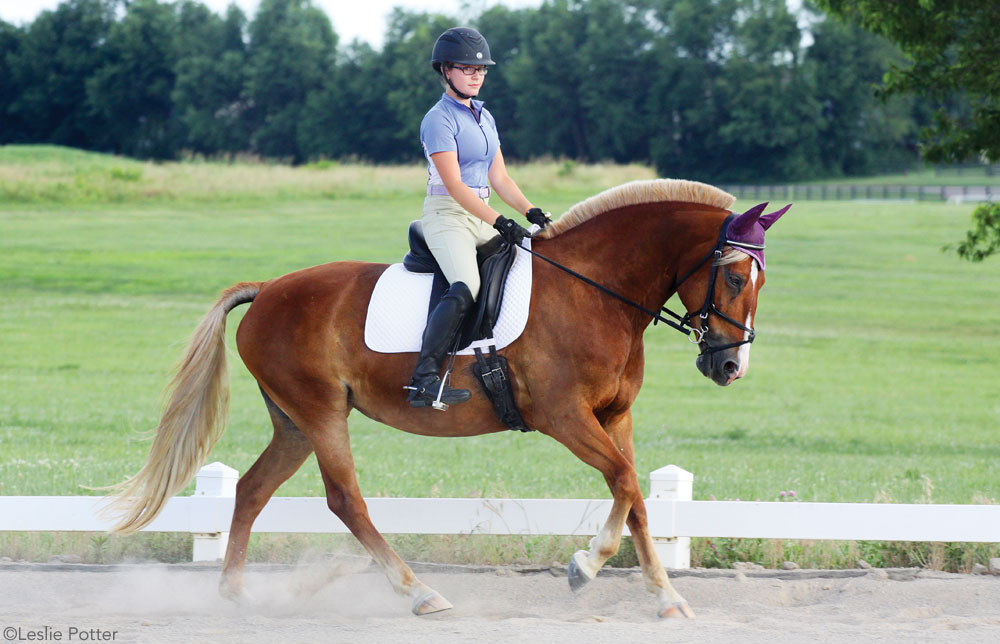Did you know that the word “dressage” comes from a French word that means “to train”? Every time you sit on a horse and school him on the flat, you are doing dressage. Doing flatwork may seem boring at times for both you and your fave horse, but it’s the key to getting him well balanced and well behaved. Flatwork can make your horse a better jumper or a better barrel racer.
Flatwork teaches him to listen to your commands, and it makes him more supple. Now, you might not be planning to enter a dressage show any time soon, but some of the movements that you would do in a lower level test can be incorporated into your normal schooling sessions. Doing these exercises will help you train your horse for whatever equestrian activity you plan to do with him.Let’s take a look at some dressage movements that you can do with your horse.
Circles
Circles help you learn how to control your horse, and they help balance him and keep him flexible. As you school, incorporate lots of 20-meter (66 feet across) circles into your routine. If you’re not sure how big 66 feet is, grab the tape measure and map out a circle in your ring or field with cones or markers.
Mark out a ring area
Look for markers in an auto shop. People put them around their cars when they need to stop by the side of the road.
Circles should be round—not lumpy or pear-shaped! To keep your horse moving forward in a good circle, place your inside leg near the girth to keep him from falling into the middle of the circle. Your outside leg should be slightly behind the girth to prevent his hindquarters from swinging out of the circle.
Your outside hand should hold the rein so it touches your horse’s neck to stop him falling to the outside. Your inside rein asks your horse to bend his head slightly inward. Concentrate on keeping a steady pace in a circle, no matter what gait you’re doing. Don’t slow down and then speed up constantly. Once your horse masters 20-meter circles, you can try 10-meter circles. It’s harder to keep your horse balanced on a smaller circle, but with lots of practice you’ll be able to do it.
Halting
Your horse should halt right away when you ask him. Practice halting every time you school. It’s easiest to ask for the halt when you are moving on a straight line. Sit down deep in the saddle, keep your back straight, keep your legs on your horse’s sides and then squeeze on the reins. Bring your elbows back so they are next to your sides.
If your horse moves after halting, ask him to halt again quickly. If he always moves on, ask him to halt, and then give another squeeze on the reins immediately to stop him from stepping forward. Give him a pat when he stands still.
Changing the rein across the diagonal
Your horse should halt right away when you ask him. Practice halting every time you school. It’s easiest to ask for the halt when you are moving on a straight line. Sit down deep in the saddle, keep your back straight, keep your legs on your horse’s sides and then squeeze on the reins. Bring your elbows back so they are next to your sides.
Riding down the center line
It’s very important to be able to ride in a straight line. Most of the time we think we’re going straight, but our horse is actually wiggle-waggling from side to side. Practice riding down the center line of your arena. Look straight ahead and keep your horse straight by keeping even pressure on his sides with both of your legs. Try to keep your hands level and close together over his neck.



